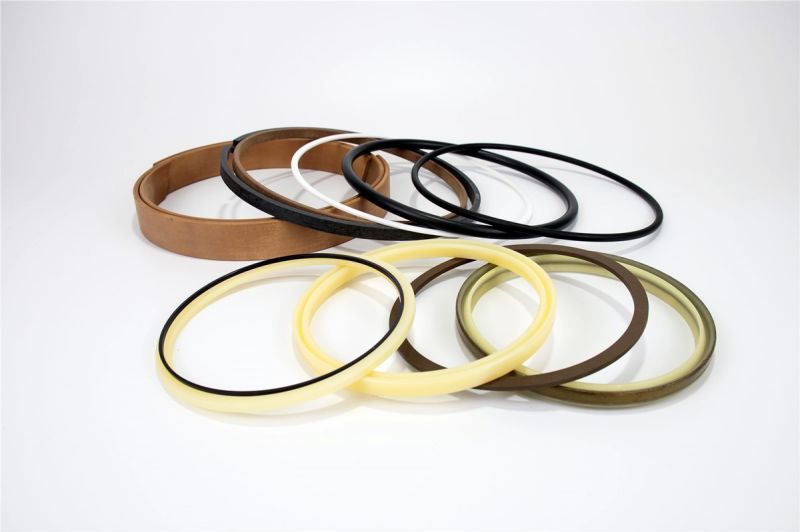The most commonly used rubber material for hydraulic seals is nitrile rubber NBR. In addition, when there are special requirements for heat resistance and oil resistance, fluororubber can be used; When there are special requirements for wear resistance and pressure resistance, AU/EU (polyurethane rubber) can be selected.
1. Types of working media for hydraulic seals
Is the working medium of hydraulic seals liquid or gas? If it is liquid, the compatibility between the liquid and the material should be considered; Gas also needs to consider the compatibility of materials with lubricants and greases; Gas and negative pressure sealing should also pay attention to breathability. If the sealing material is compatible with the sealing fluid, it can cause the sealing element to expand or contract, leading to failure in the early stages of use. The expansion of the seal causes an increase in frictional resistance and also causes the seal to roll. Shrinkage of the sealing element can cause a decrease in preloading, a decrease in eccentricity compensation capacity, and ultimately lead to leakage.
2. Dynamic or static sealing
Dynamic seals have corresponding requirements for the friction and wear performance of materials, and materials with appropriate friction coefficients should be selected based on the size of the motion speed. In order to achieve sufficient service life, it is also necessary to choose the wear resistance of materials based on the speed and stroke of movement. When there is a requirement for low-speed performance, special attention should be paid to the size of the material’s friction coefficient and the difference between the dynamic and static friction coefficients.
3. Structural type of sealing element (extruded or lip shaped)
The working principle of sealing varies with different structural types, which inevitably requires different mechanical properties such as elasticity, strength, and deformation rate of materials.
4. Working temperature of hydraulic seals
The applicable temperature range of various sealing rubbers and plastics varies greatly. When selecting materials, it is necessary to accurately grasp the working temperature of the sealing components, especially the low temperature environment in which the components are located, and choose materials accordingly; Or control the temperature rise of components, systems, and seals based on the working temperature range of the material. Choose materials that can withstand their highest temperature.
- Working pressure of hydraulic seals
Working pressure is the main working parameter of hydraulic and pneumatic systems, which can vary between 1-400MPa or a larger range. The pressure resistance of materials should adapt to the requirements of working pressure.
6. Is the working environment of hydraulic seals contaminated If there is dust pollution in the working environment, it will exacerbate material wear, and the wear resistance of the material should be improved.Is the component stable or vibrating during operation.If working under vibration conditions, the material should have sufficient elasticity to compensate for insufficient sealing contact stress caused by displacement caused by vibration.
WhatsApp:+86-13201832718
Post time: Mar-06-2024








